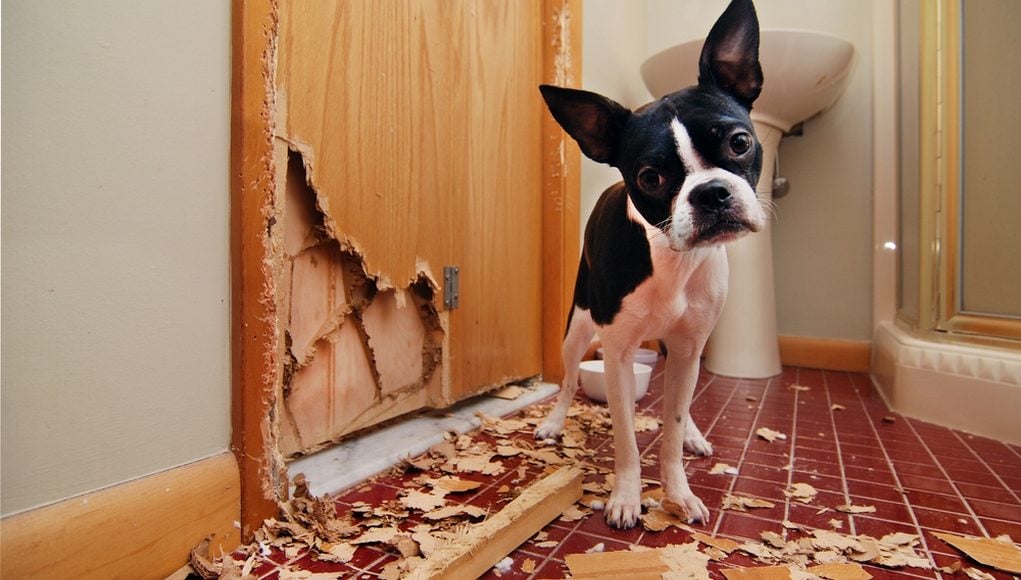It’s an exciting day. You've adopted and bringing home your new puppy. Regardless of whether your new dog is old or young, there are a set of steps to go through first to make your house or apartment safe and enjoyable time for everyone.
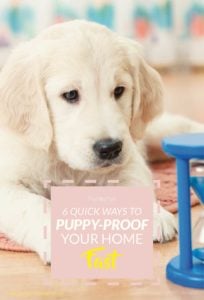 Your new dog will have needs and desires that may interfere with your needs and desires – like the desire to have a clean house, socks without holes, and Holiday decorations.
Your new dog will have needs and desires that may interfere with your needs and desires – like the desire to have a clean house, socks without holes, and Holiday decorations.
When you adopt a new dog, it is best to think like a pet before you go and pick him up. Dogs are curious hunters and chewers. They have an excellent sense of smell, and they hate being bored (which is when they go onto destroying your belongings).
First, take some time and walk around your house and yard, and put yourself in your new puppy’s paws to see what may go wrong once he's here. If you think something could be a hazard, it probably will be.
It saves time and money to deal with these issues before your puppy starts getting into things. Not to mention, the health and happiness of your new canine family member will be at stake if you don't properly puppy-proof your home.
RELATED: 8 Basic Tips for Potty Training a Puppy
6 Top Tips for Puppy-Proofing your Home
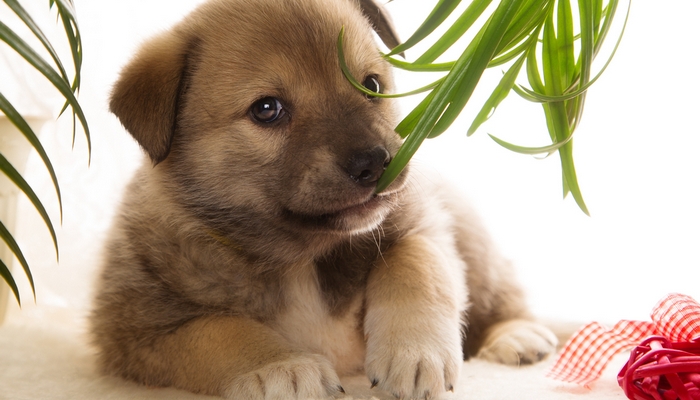 1. Pet Gates
1. Pet Gates
There are places you will not want your puppy or adult dog to go. Pet gates are perfect for keeping him out. If you want to keep him out of an area you don’t go into very often, you can just use a basic gate.
If you have larger dogs and need a gate higher than one you can step over, then you might need to invest a little more money into getting a gate with a latched door.
Consider who will be using the room. We keep our cat food in a bathroom that is used by the household, but the dogs will eat the cat food in 5 seconds flat. So, we have a pet gate with a latched door. The cats could easily jump over it, but now the older cats are having trouble jumping. We will now have to get a gate with a little cat door.
Most pet gates can also double as a baby gate. When my daughter was small, I had a gate in her bedroom door and it served to keep her in when I was cleaning and keep the dogs out of her room as well. There are infinite uses for pet gates, like keeping your dog away from cat littler, holiday decorations and away from the garbage can.
TEST VIDEO: Best Dog Gate Comparison
2. Wires
Puppies like to chew. Sometimes, even adult dogs will act out and chew, especially if they are in a new home. Your fur baby will not know that electrical wires are dangerous.
Most hardware stores sell wire protectors. You can get them to fit almost anywhere in the house. They are great for media areas where you don’t want to have to unplug and pick up the wires every time you leave the house. They are available for walls and floors.
You can get wire protectors that match your décor or some that are a bright color to warn of a trip hazard. Whichever type will suit your needs best, you can find in stores or online. It is best to spend a little money and keep your pet safe from electrical shock and your home safe from electrical fires.
READ ALSO: How To Puppy Proof Your Home
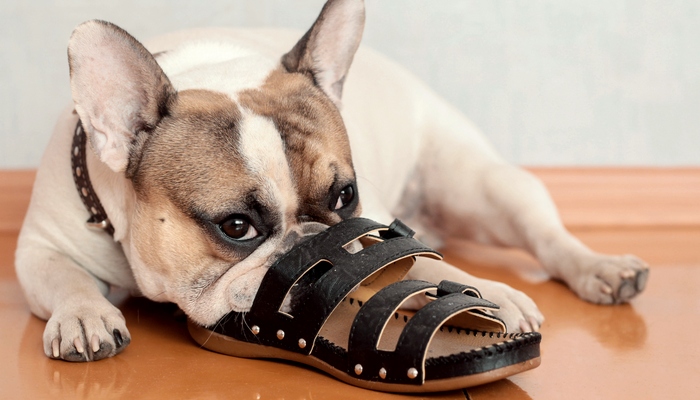 3. More Chewing
3. More Chewing
While we are on the subject of chewing, your puppy needs chew toys. This is a good way to puppy proof your home. You can use flavored raw-hides, vegetable chews (for the vegetarians), or other toys that keep your pet active and busy.
I find with my dogs, flavored raw hides work best. When they have a tasty bone, they are not wondering around looking for something else to chew on.
If you don’t give your new puppy something to chew, he will find things to chew – wires, socks, books, furniture – the possibilities are endless.
RECOMMENDED: How To Train A Dog To Stop Chewing – A Video Guide
4. Cabinet and Trashcan Locks
If you have little humans in the house, this is probably already covered. If you have little furry kids in the house, you too will need these. My dogs can open any cabinet. Even though we had a trashcan that you had to step on to open, they can nose that open as well.
While you are in the hardware department for wire protectors, you need to pick up a few locks. Now that my dogs are adults, they don’t try to get in the cabinets. That was a different story when they were puppies.
Cabinets are full of plastic things, cloth things, and all kinds of interesting things for a puppy to gnaw on. These things could come at a price that is heavier than a mess to clean up.
If your canine friend chews on chemicals or poison, it could cost him his life. If your dog swallows something large, it could become lodged in his digestive tract resulting in an expensive emergency surgery.
RELATED: 26 Step Checklist for Adopting a New Dog or Puppy
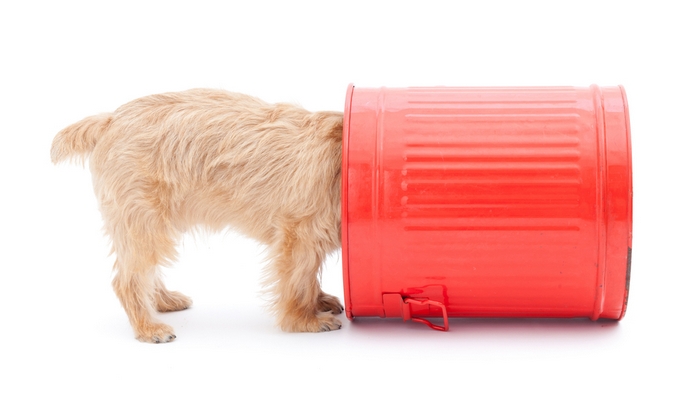 5. Pee Pads
5. Pee Pads
Just like babies, puppies cannot hold their urine and feces for very long. There bladders and intestines are not fully developed until they are several months old. You want to make sure to line your puppy's crate with pads and place one under the crate or area that he sleeps in.
Pet gates come in handy here as well, to keep your puppy out of rooms with carpets and rugs. My little dog would use a puppy pee pad when she was only six weeks old. If she got antsy and whiney, I would put her on a pee pad and she would go immediately.
If you are bringing home an older dog, it is a good idea to have a stash of pee pads too. Older dogs will have accidents when they move to a new home, especially if they are also dealing with the stress of a new family. Pee pads are a great way to save the floor until the house training kicks in.
COMPARISON: Best Puppy Potty Training Pads Comparison
6. Fence Toppers
This is something you will only need to worry about if you have a large dog. They are basically a long plastic pipe that you put around your fence line. It keeps your dog from being able to find traction on the fence and jump over it.
It also protects your dog’s paws and face from injury if he jumps against the fence.
If you are getting a puppy, this is one expense you can wait on. Also, this is mainly for hurricane style fences. I have a dog that jumps and one that doesn’t. This is something that you can kind of wait and see if you need. If you have the money to get it, I would suggest going ahead and doing it without the wait. Just to be sure.
READ NEXT: How To Toilet Train A Puppy – Step-by-Step Instructions


